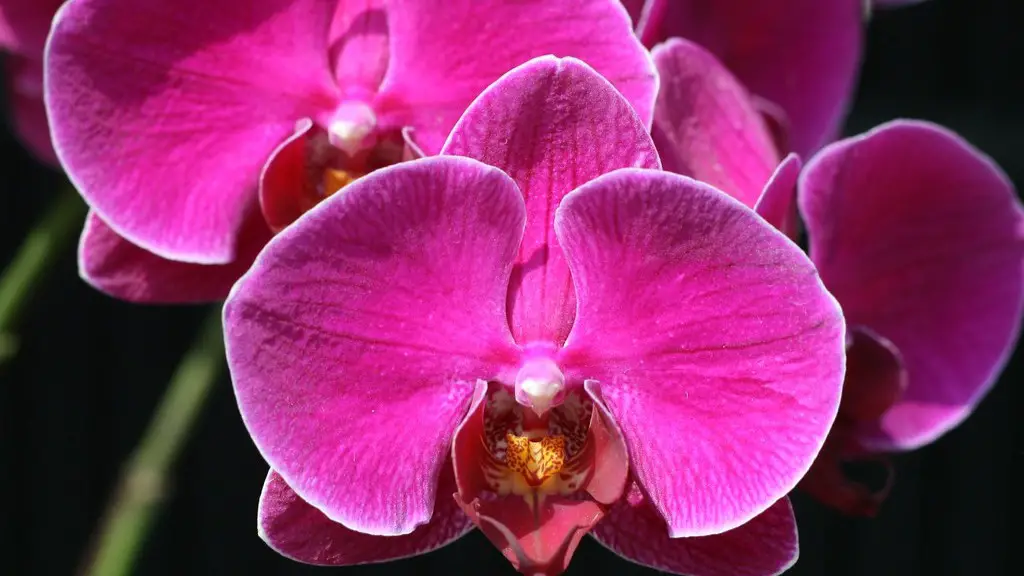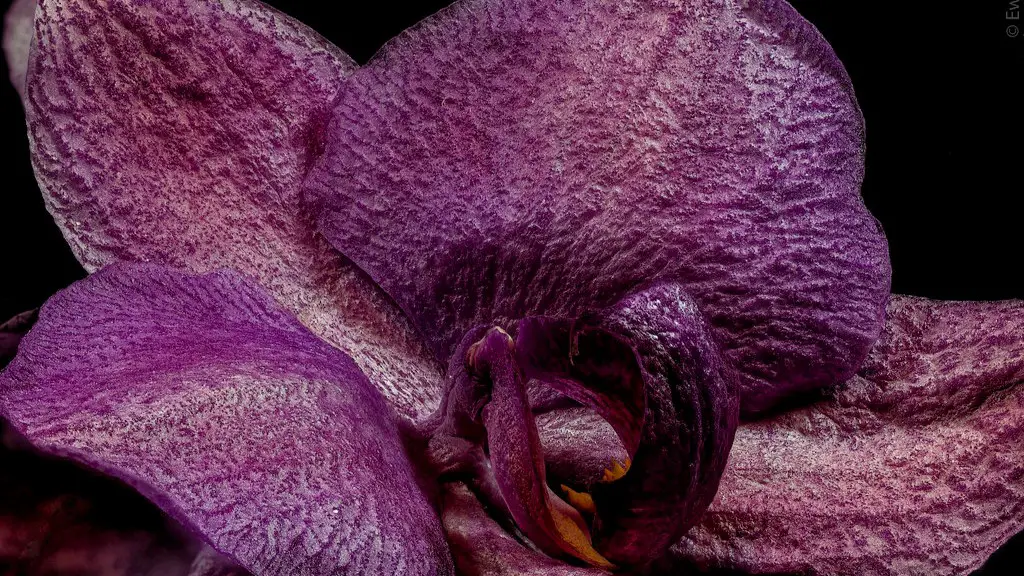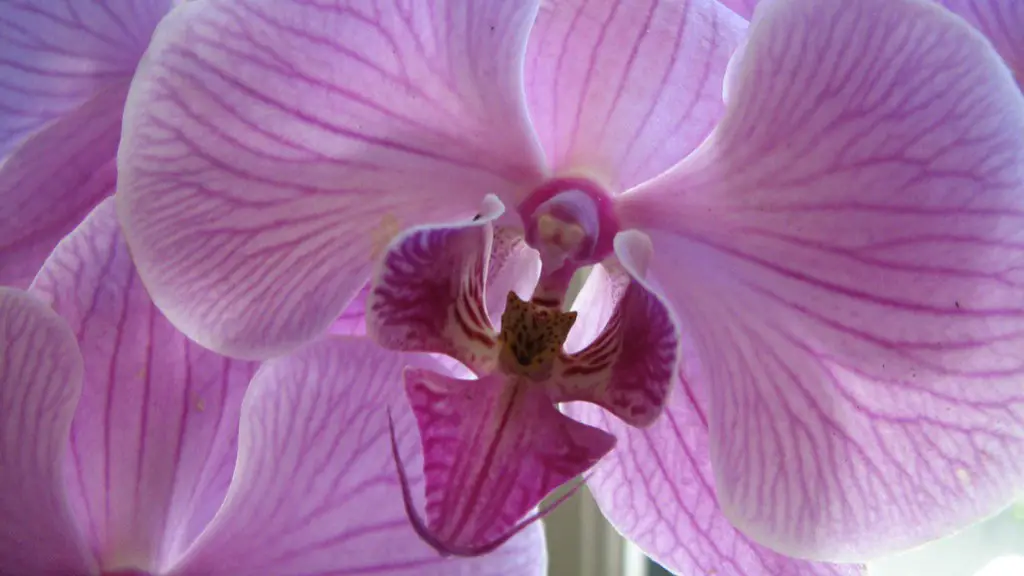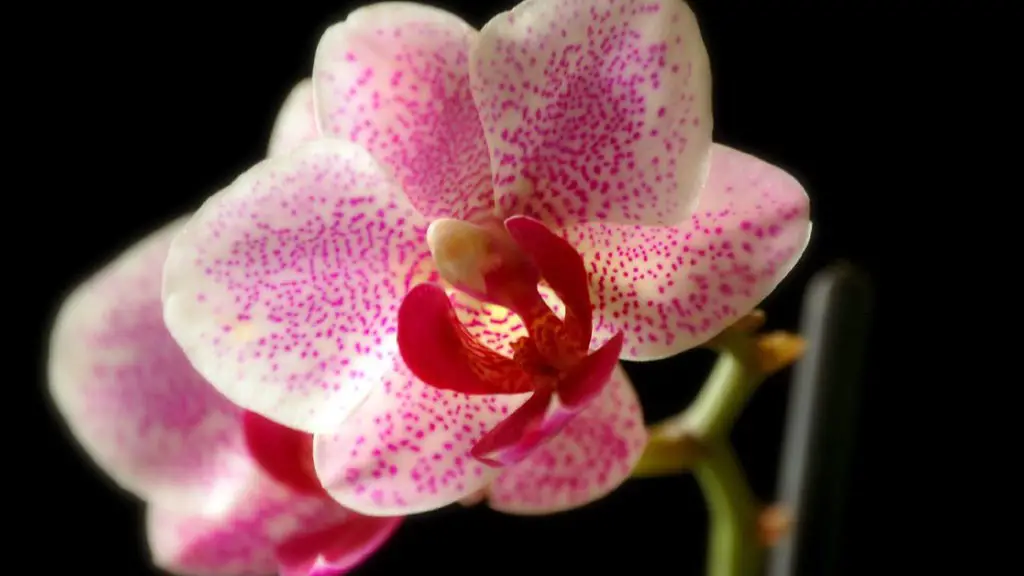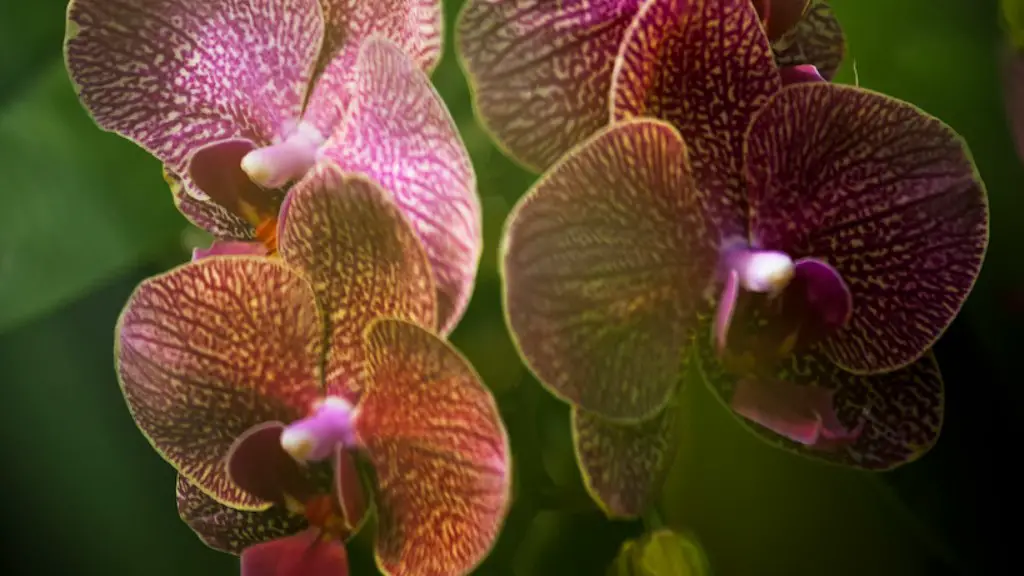One of the most common reasons why orchid leaves turn yellow is because the plant is not getting enough light. When an orchid does not receive enough light, the leaves will begin to turn yellow and may eventually start to fall off. Another reason for yellowing leaves can be over- watering. If the roots of the plant are sitting in water for too long, they can start to rot and this will cause the leaves to turn yellow.
There are a few reasons why the leaves on your Phalaenopsis orchid might be turning yellow. One possibility is that the plant is not getting enough light and is starting to etiolate, or stretch, in search of more light. If the plant is getting too much light, the leaves may turn yellow from sunburn. Or, the problem could be with the roots; if they are waterlogged, for example, the leaves will turn yellow from lack of oxygen. Finally, yellow leaves can be a sign of nutrient deficiency, so make sure you are fertilizing your orchid regularly. If you are not sure what is causing the yellowing leaves, it is best to consult with a local expert or take the plant to a professional for diagnosis.
How do I fix yellow leaves on my orchid?
If you overwater your orchid, the roots can rot and the leaves can turn yellow. However, if you use ice cubes to water your orchid, you will never have to worry about overwatering. The ice cubes will melt slowly, releasing the water in a slow drip.
The yellow leaf on an orchid plant is actually still providing nutrients to the plant, even though it may look like it is dead or dying. Allowing the yellow leaf to remain on the plant until it falls off naturally is the best way to ensure that the plant gets all the nutrients it needs. Once the leaf falls off, it can be removed.
How do I fix yellow leaves on my Phalaenopsis
Droopy leaves that are wrinkly and yellow indicate that your plant is thirsty. In general, Phalaenopsis orchid needs a weekly soaking in clean water for twenty minutes. Remove the orchid from the water and allow excess water to drain off. Alternately, you can simply run water through your orchids’ planting medium.
It is not uncommon for the bottom leaf, or an older leaf, on the Phalaenopsis orchid to turn yellow. As the natural part of the orchid life cycle, an older leaf at the bottom will turn yellow and begin to wither away. This is perfectly normal and nothing to worry about. Just remove the leaf when it is completely yellow and dry.
What do overwatered orchids look like?
Overwatered orchids will have leaves that look limp or sometimes leathery depending on the species. The existing leaves may begin turning yellow, and new leaves may look pleated. Usually a change in the leaves is the most visible warning sign that orchids give.
If your orchid’s bottom leaves are yellow and wilted, and its buds are falling off instead of opening (bud blast), it is likely dehydrated. Follow these steps to find out whether you have overwatered or under-watered your phalaenopsis orchid.
How do you tell if an orchid is underwatered?
If the roots on your orchid are dry and shriveled, it’s likely that the plant hasn’t had enough water. This can be due to a variety of factors, including the potting material being too coarse or simply not watering the orchid frequently enough. In either case, make sure to give your orchid more water and monitor the roots carefully to ensure they stay healthy and hydrated.
A houseplant’s leaf turns yellow when it is dying because chlorophyll gives the leaf its green color. When the leaf loses its chlorophyll, the plant abandons it and begins to absorb leftover nutrients from the leaf. Once the leaf turns yellow, you generally can’t make it turn back green again.
How do you fix an overwatered orchid
If you have an overwatered orchid, don’t despair! There is a chance you can rescue your plant if you act quickly. Start by removing any mushy or damaged roots with a sharp, sterile knife. Then, repot the orchid in fresh potting media following the instructions on our website. With a little luck, your orchid will make a full recovery.
Hydrogen peroxide is a powerful oxidizing agent that can kill microorganisms, but it can also harm the cells of living organisms. When used on orchids, it can break down the cells of the roots, leading to decay.
How often should you water an orchid?
Watering about once per 7-10 days is generally a good idea to prevent root rot, crown rot, and other over watering problems like fungus gnat infestations.
To help your orchid rebloom, continue to water it with 3 ice cubes once a week and fertilize it with a balanced houseplant fertilizer once or twice a month at half strength. Provide plenty of indirect sunlight during the day and put your orchid in a cooler spot at night. With these simple steps, you should see reblooming begin within a few weeks.
Why are my orchid leaves turning yellow and flowers falling off
If you find that your orchid has dropped its flowers and the leaves are turning yellow and drooping, it is likely that you have waterlogged the plant. You should check the roots of the plant for any signs of root rot, which will appear as deep green, brown, or black roots. Soft or mushy roots also signify too much water.
Orchids are beautiful, delicate flowers that can brighten up any room. However, they are also finicky plants that require a careful balance of water, light, and fertilizer to thrive. One of the first signs that your orchid is not healthy is discolored or wilted leaves. If the leaves are brown or mushy, this is a sign of root rot and your plant will need to be repotted in fresh soil. If the leaves are very dark green, this means your plant is not getting enough light. Move it to a place where it will receive plenty of bright, indirect sunlight.
Do you water orchids from the top or bottom?
Orchids are one of the most popular and beautiful houseplants. They are also one of the most fussy. To master watering orchids, it is essential to water from above with fresh, pure water. Allow the water to run through the pot and out the drainage holes. For orchids with water storage, pseudobulbs, water when the potting mix is approaching dry.
Orchids need high humidity to thrive, and this is a simple way to provide it. Just make sure that the water level doesn’t get too low, or the roots of the plant will start to dry out.
Should orchid leaves be misted
An orchid needs a lot of humidity, so you should mist it with a spray bottle every day. Misting gives the orchid more humidity but does not create a soggy root environment. It is best to put your orchid where it will receive medium indirect sunlight.
Orchids are a type of flower that is known for its delicate and intricate bloom. They are often seen as a symbol of luxury and refinement, and as such, are often given as gifts for special occasions. For many people, growing orchids can be a challenging and rewarding hobby.
One of the most important things to remember when growing orchids is that they require a very specific type of environment in order to thrive. In particular, they need high humidity and plenty of airflow. Because of this, it is important to carefully consider the type of potting mix that you use.
Some orchid experts believe that a perlite and peat mix is less likely to produce aerial roots than bark. However, regardless of the type of potting mix that you use, it is important not to cover the roots of the plant. Doing so can cause them to rot.
When it comes to watering, orchids need to be careful not to overwater. They should be watered about once a week, and the potting mix should be allowed to dry out completely between waterings.
Overall, growing orchids can be a challenging but rewarding experience. By carefully considering the type of potting mix that you use and
Final Words
There are several possible reasons for this. One is that the plant is not getting enough light. Another is that the plant is not getting enough water. Another possibility is that the plant is getting too much water. Finally, it is possible that the plant is not getting enough nutrients.
The most likely reason for yellowing leaves on a Phalaenopsis orchid is lack of water. These plants like to be moist, but not wet, so make sure to check the soil before watering. Other causes could include too much or too little light, temperature stress, or diseases.
